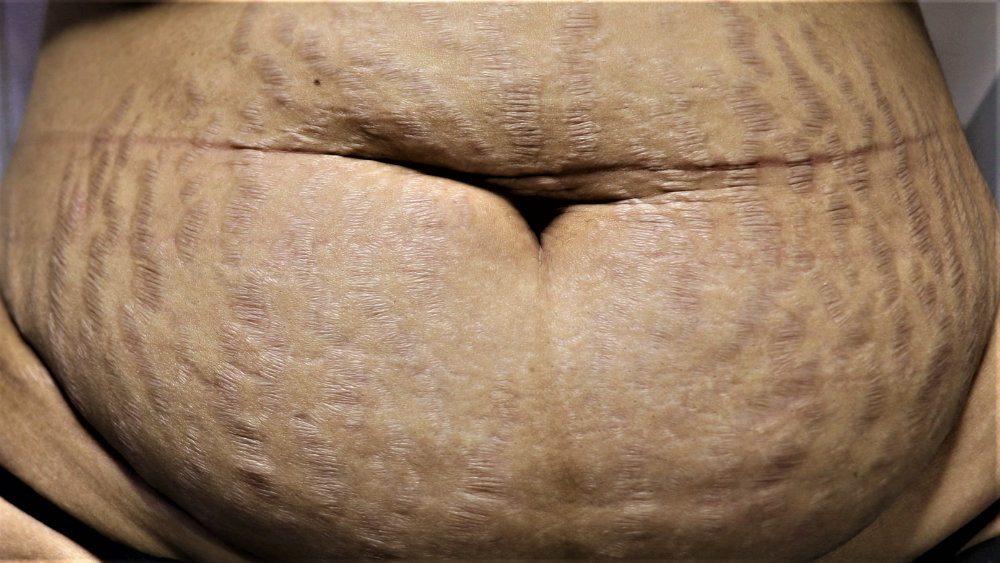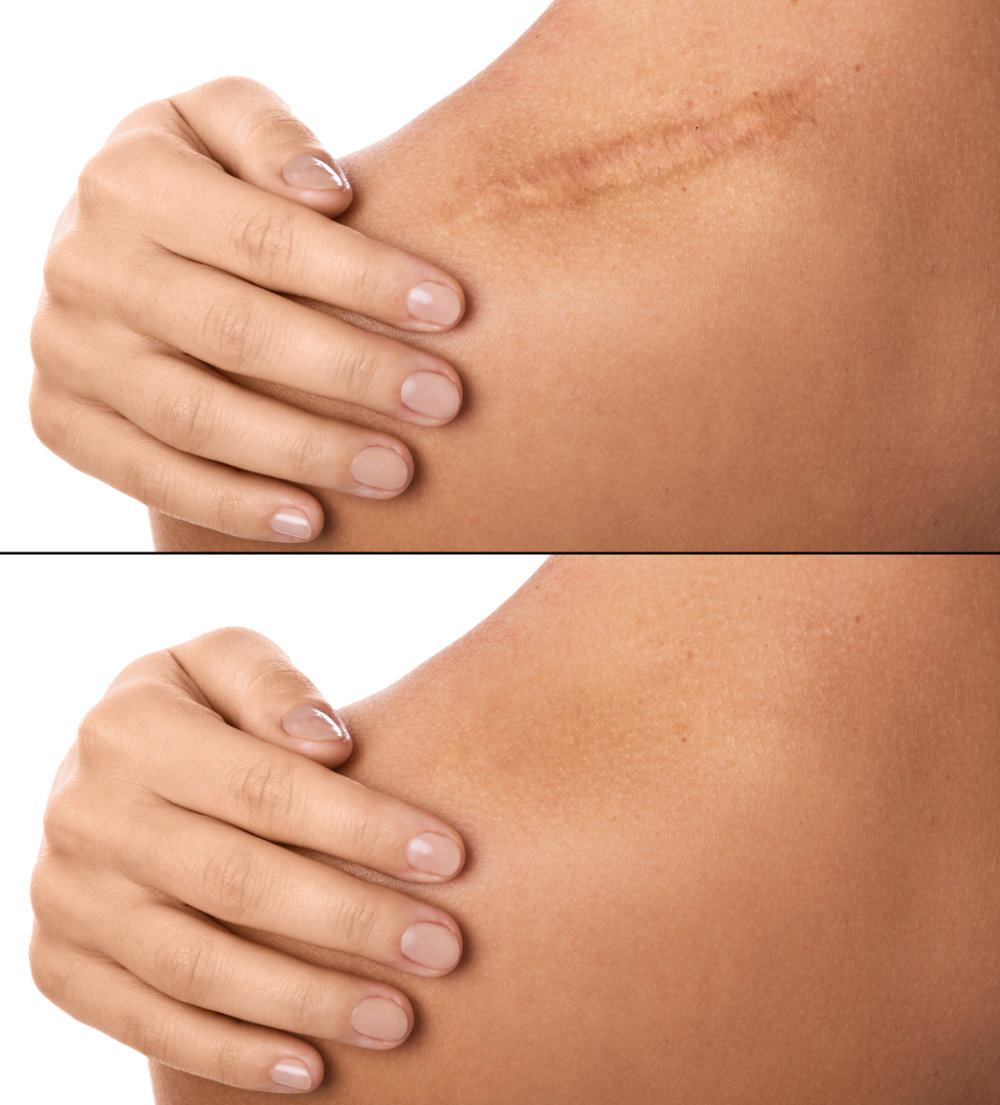Scars and stretch marks can form unsightly marks on our skin, often leaving permanent marks and will not go away or fade without intervention.


Stretch marks can form from sudden growth or weight gain, often seen in pregnancy, and sometimes form in teenagers during puberty, they can be unsightly particularly if they form different coloured striations to your own skin that makes them more prominent. Stretchmarks are best treated soon after occurrence, for patients who are left with unsightly stretchmarks after delivering their child, we recommend to start the treatment of those stretchmarks 6 months after delivery.
A scar is formed as the body repair damaged skin by replacing the damaged area tissues of varying composition. A scar can appear flat, lumpy, sunken, or dark coloured. The final appearance of the scar depends on the patient’s age, nutritional status, skin type, location on the body, direction of the wound and type of injury. Scars are a natural part of the healing process. Most will fade with time, although some scars never completely disappear. Generally scars fade sufficiently within 2 years, however the ones that stay after 2 years will require some intervention to help the skin repair it self to reduce the appearance of those scars.

Platelet rich plasma (PRP) intradermal injection treatment is a procedure we use, in combination with microneedling and vitamin C topical infusion for rebuilding the skin in the area affected by scars or stretch marks, by using the healing properties of a patient’s own blood and growth factors to enhance the body’s ability to rebuild damaged skin and injury to achieve scar and stretch mark reduction naturally. This treatment normally requires 3 to 6 sessions to achieve sufficient scar/stretch mark reduction to meet most patient’s expectations.
Dr. Doris has specially formulated a series of regenerative treatment plan as well as a special herbal lotion that that can work effectively to target the cause of acne scar to achieve aesthetic results.
